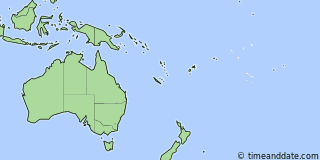| Current Time: | Jul 24, 2025 at 11:47:30 am |
|---|---|
| Moon Direction: | 21.44° NNE↑ |
| Moon Altitude: | 42.19° |
| Moon Distance: | 234,083 mi |
| Next Full Moon: | Aug 8, 2025, 9:54 pm |
| Next New Moon: | Aug 22, 2025, 8:06 pm |
| Next Moonset: | Today, 6:33 pm |
Moonrise, Moonset, and Phase Calendar for Rarotonga, July 2025
Scroll right to see more
| 2025 | Moonrise/Moonset | Meridian Passing | ||||||||||
|---|---|---|---|---|---|---|---|---|---|---|---|---|
| Jul | Moonrise | Moonset | Moonrise | Time | Distance (mi) | Illumination | ||||||
| 1 | 11:57 am | ↑ (91°) | - | - | 6:08 pm | (70.9°) | 248,162 | 44.0% | ||||
| - | 12:23 am | ↑ (266°) | 12:27 pm | ↑ (97°) | 6:48 pm | (76.7°) | 250,047 | 53.8% | ||||
| 3 | - | 1:13 am | ↑ (260°) | 12:58 pm | ↑ (103°) | 7:28 pm | (82.3°) | 251,136 | 63.4% | |||
| 4 | - | 2:03 am | ↑ (254°) | 1:32 pm | ↑ (109°) | 8:11 pm | (87.2°) | 251,414 | 72.5% | |||
| 5 | - | 2:54 am | ↑ (249°) | 2:08 pm | ↑ (113°) | 8:56 pm | (88.5°) | 250,929 | 80.7% | |||
| 6 | - | 3:48 am | ↑ (245°) | 2:49 pm | ↑ (117°) | 9:44 pm | (85.3°) | 249,774 | 87.9% | |||
| 7 | - | 4:43 am | ↑ (241°) | 3:35 pm | ↑ (120°) | 10:36 pm | (83.3°) | 248,086 | 93.6% | |||
| 8 | - | 5:38 am | ↑ (240°) | 4:26 pm | ↑ (121°) | 11:30 pm | (82.7°) | 246,021 | 97.6% | |||
| 9 | - | 6:33 am | ↑ (239°) | 5:22 pm | ↑ (120°) | Moon does not pass the meridian on this day. | ||||||
| - | 7:25 am | ↑ (241°) | 6:21 pm | ↑ (118°) | 12:25 am | (83.7°) | 243,748 | 99.6% | ||||
| 11 | - | 8:12 am | ↑ (244°) | 7:21 pm | ↑ (114°) | 1:19 am | (86.4°) | 241,407 | 99.5% | |||
| 12 | - | 8:55 am | ↑ (249°) | 8:20 pm | ↑ (108°) | 2:11 am | (89.5°) | 239,129 | 97.0% | |||
| 13 | - | 9:35 am | ↑ (255°) | 9:18 pm | ↑ (102°) | 3:00 am | (84.3°) | 236,988 | 92.1% | |||
| 14 | - | 10:12 am | ↑ (262°) | 10:16 pm | ↑ (95°) | 3:48 am | (78.2°) | 235,036 | 85.1% | |||
| 15 | - | 10:47 am | ↑ (269°) | 11:13 pm | ↑ (88°) | 4:34 am | (71.5°) | 233,285 | 76.1% | |||
| 16 | - | 11:23 am | ↑ (276°) | - | 5:20 am | (64.5°) | 231,760 | 65.6% | ||||
| 12:11 am | ↑ (80°) | 12:00 pm | ↑ (283°) | - | 6:08 am | (57.7°) | 230,477 | 54.2% | ||||
| 18 | 1:12 am | ↑ (73°) | 12:41 pm | ↑ (289°) | - | 6:59 am | (51.4°) | 229,486 | 42.3% | |||
| 19 | 2:15 am | ↑ (67°) | 1:27 pm | ↑ (295°) | - | 7:53 am | (46.0°) | 228,858 | 30.8% | |||
| 20 | 3:22 am | ↑ (63°) | 2:20 pm | ↑ (299°) | - | 8:52 am | (42.0°) | 228,701 | 20.2% | |||
| 21 | 4:29 am | ↑ (60°) | 3:19 pm | ↑ (301°) | - | 9:55 am | (39.9°) | 229,115 | 11.4% | |||
| 22 | 5:34 am | ↑ (59°) | 4:23 pm | ↑ (300°) | - | 10:58 am | (39.8°) | 230,172 | 5.0% | |||
| 23 | 6:33 am | ↑ (61°) | 5:29 pm | ↑ (298°) | - | 12:00 pm | (41.7°) | 231,888 | 1.1% | |||
| 7:25 am | ↑ (64°) | 6:33 pm | ↑ (293°) | - | 12:57 pm | (45.4°) | 234,203 | 0.1% | ||||
AltitudeHeadingPosition | ||||||||||||
| 25 | 8:09 am | ↑ (69°) | 7:34 pm | ↑ (288°) | - | 1:49 pm | (50.3°) | 236,970 | 1.8% | |||
| 26 | 8:48 am | ↑ (75°) | 8:30 pm | ↑ (282°) | - | 2:37 pm | (56.1°) | 239,991 | 5.8% | |||
| 27 | 9:23 am | ↑ (82°) | 9:24 pm | ↑ (275°) | - | 3:21 pm | (62.2°) | 243,033 | 11.7% | |||
| 28 | 9:55 am | ↑ (88°) | 10:15 pm | ↑ (268°) | - | 4:02 pm | (68.4°) | 245,854 | 19.2% | |||
| 29 | 10:26 am | ↑ (95°) | 11:05 pm | ↑ (262°) | - | 4:43 pm | (74.5°) | 248,225 | 27.8% | |||
| 30 | 10:57 am | ↑ (101°) | 11:55 pm | ↑ (256°) | - | 5:23 pm | (80.3°) | 249,967 | 37.1% | |||
| 31 | 11:30 am | ↑ (107°) | - | - | 6:05 pm | (85.5°) | 250,945 | 46.7% | ||||
| * All times are local time for Rarotonga. They take into account refraction. Dates are based on the Gregorian calendar. Illumination is calculated at lunar noon. | ||||||||||||
Jan | Feb | Mar | Apr | May | Jun | Jul | Aug | Sep | Oct | Nov | Dec
Elsewhere on timeanddate.com
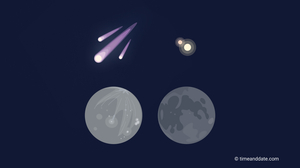
Skywatching Tips for August
What’s up in the day and night sky in August 2025, including the Perseid meteor shower, a close approach between Venus and Jupiter, and a Black Moon.
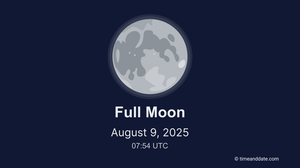
Moon Guide for August 2025
August’s Moon phases and close approaches. Plus, it’s a month with two First Quarter Moons—whichever time zone you’re in. Find out why this is a tight squeeze.
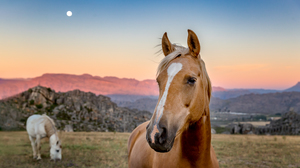
Full Moon Names
Ancient cultures gave names to the Full Moon. These names are still in use today.
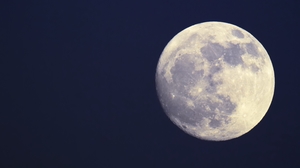
The Full Moon
The third primary phase of the Moon is the Full Moon.
